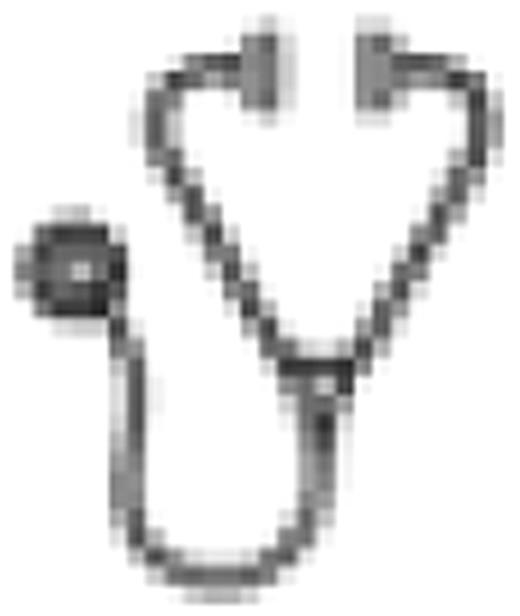Abstract
Poster Board II-594
AML with mutated nucleophosmin (NPM1) is a provisional entity in the WHO-2008 classification of myeloid neoplasms. A yet unresolved issue concerning NPM1-mutated AML is the biological and clinical significance of concomitant multilineage dysplasia (MLD). So far, NPM1+ AML with MLD is classified as AML with myelodysplasia-related changes in the new WHO classification. Therefore, we addressed the impact of MLD in 378 de novo AML patients with mutated/cytoplasmic NPM1 and performed comparison of cytomorphological features, cytogenetics, the FLT3 mutation status, and gene expression profiles in patients with and without MLD. MLD - as defined by dysplastic features in at least two hematopoietic lineages by cytomorphology - was present in 95/378 (25.1%) cases. Mean age (±standard deviation) was 52.1±14.0 years in the group with MLD and 54.8±14.5 in the group without MLD (p=0.11). Males comprised 50/95 (52.6%) in the group with MLD vs. 119/283 (42%) in the group without MLD (p=0.075). Morphological subtypes according to FAB/WHO were available in 365 cases (96.5%) and did not differ significantly between both groups. The median WBC was 17.1 G/l (range: 0.9–211.0 G/l) in the group with MLD and 35.6 G/l (range: 0.5–600.0 G/l) in the group without MLD (p=0.0027). Absence of CD34 expression was observed in 60/74 (81.1%) and 172/212 (81.1%) cases of the groups with and without MLD, respectively (p=1.0). Cytogenetic data was available in all 378 cases: An abnormal karyotype was present in 15/95 (15.8%) cases with MLD and in 37/283 (13.1%) cases without MLD (p=0.49). Molecular analyses detected the FLT3-ITD in 16/91 (17.6%) cases tested with MLD and in 110/276 (39.9%) cases without MLD (p<0.001). FLT3-TKD mutations were found in 7/80 (8.8%) patients within the group with MLD and in 21/221 (9.5%) patients within the group without MLD, respectively (p=1.0). Moreover, NPM1-mutated AML with or without MLD demonstrated non-discriminative microarray gene expression profiles (Affymetrix HG-U133 Plus 2.0). The gene expression profiles, however, clearly differed between NPM1-mutated AML and NPM1-wildtype cases as control group, e.g. by detectable downregulation of CD34 and upregulation of the characteristic HOX gene signature. This indicates that NPM1 mutations rather than MLD dictate the distinctive features of this AML subtype. With respect to clinical relevance, presence of MLD had no significant influence on overall survival (OS), however, it was related to a better event-free survival (EFS, median 33.3 vs. 13.9 months, p=0.0412), which is likely due to the fact that FLT3-ITD were less common in the MLD+ group (p=0.001). In addition also in our cohort the presence of an FLT3-ITD was associated with a significantly shorter EFS (median 11.2 vs. 22.3 months, p=0.0002) and a significantly shorter OS (median 12.5 months vs. not reached, p<0.0001). MLD also had no impact on outcome if analyzed within the groups with or without FLT3-ITD, respectively. Multivariate analysis revealed FLT3-ITD as the only parameter independently related to EFS (p=0.0051) and OS (p=0.0024). In conclusion, the discrimination of AML with MLD from AML without MLD in NPM1-mutated AML does not lead to distinct entities of AML since biologic features and outcome are largely similar. The FLT3-ITD mutation, however, again was confirmed to be an important biological parameter in AML with NPM1 mutations as demonstrated by a significantly worse outcome. Thus, our data underlines that NPM1+ AML is a distinct entity and further suggests that NPM1+ AML should be considered as one group irrespective of the presence or absence of MLD.
Haferlach:MLL Munich Leukemia Laboratory: Equity Ownership. Macijewski:MLL Munich Leukemia Laboratory: Employment. Weiss:MLL Munich Leukemia Laboratory: Employment. Schnittger:MLL Munich Leukemia Laboratory: Equity Ownership. Kern:MLL Munich Leukemia Laboratory: Equity Ownership. Kohlmann:MLL Munich Leukemia Laboratory: Employment. Miesner:MLL Munich Leukemia Laboratory: Employment. Haferlach:MLL Munich Leukemia Laboratory: Equity Ownership. Falini:Xenomics: Patents & Royalties.

This icon denotes an abstract that is clinically relevant.
Author notes
Asterisk with author names denotes non-ASH members.

